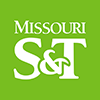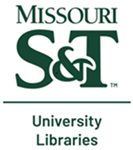Abstract
Sample-return missions typically seek to collect and return samples from extraterrestrial locations to Earth for analysis. The return of samples from certain locations in the solar system represents a potential hazard to Earth's biosphere from foreign microorganisms. One way this could occur would be a break-up of the returning capsule during entry (which would disperse the samples through the air) due to undetected damage to the capsule thermal protection system (TPS). As a result, missions that plan to return payloads from some destinations are likely to have certain design requirements for the TPS surrounding their returning capsules, which may include ensuring that the TPS shielding is able to withstand damage due to micrometeoroid and orbital debris impacts. In this paper, we develop a particle impact-based ballistic limit equation (BLE) for a shielded TPS covering a variety of impact scenarios, as well as shield component materials, thicknesses, and internal spacings. The predictions of the BLE we develop with regard to TPS failure/nonfailure are seen to be consistent with the predictions of hydrocode simulations. Because of the manner in which it was developed, the BLE is sufficiently flexible that it can be used for design trade studies and probabilistic risk assessment exercises.
Recommended Citation
W. P. Schonberg and M. Squire, "Analyzing Micrometeoroid and Orbital Debris Shield Performance for Sample Return Spacecraft," Journal of Spacecraft and Rockets, vol. 62, no. 1, pp. 73 - 80, American Institute of Aeronautics and Astronautics, Jan 2025.
The definitive version is available at https://doi.org/10.2514/1.A35997
Department(s)
Civil, Architectural and Environmental Engineering
Keywords and Phrases
Ballistic Limit Equations; Hydrocode Simulations; Micrometeoroids; MMOD; Orbital Debris; Planetary Science and Exploration; Sample Return Missions; SPHC; Thermal Protection Systems; Whipple Shield
International Standard Serial Number (ISSN)
1533-6794; 0022-4650
Document Type
Article - Journal
Document Version
Citation
File Type
text
Language(s)
English
Rights
© 2025 American Institute of Aeronautics and Astronautics, All rights reserved.
Publication Date
01 Jan 2025
Included in
Curriculum and Instruction Commons, Educational Administration and Supervision Commons, Educational Assessment, Evaluation, and Research Commons, Educational Leadership Commons, Educational Methods Commons, Space Habitation and Life Support Commons, Space Vehicles Commons, Structures and Materials Commons



Comments
NASA Engineering and Safety Center, Grant None